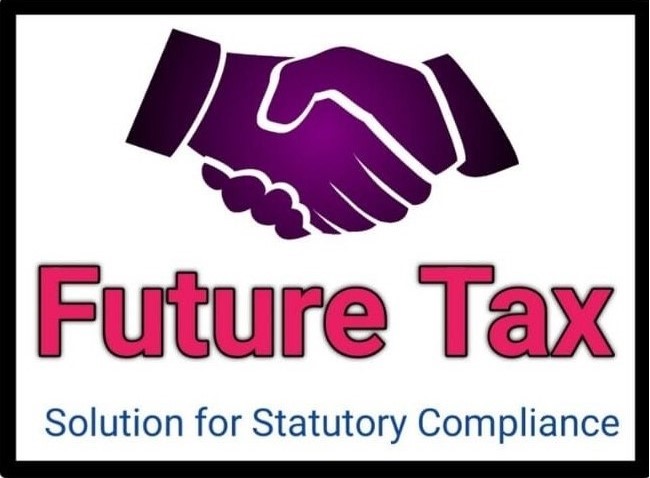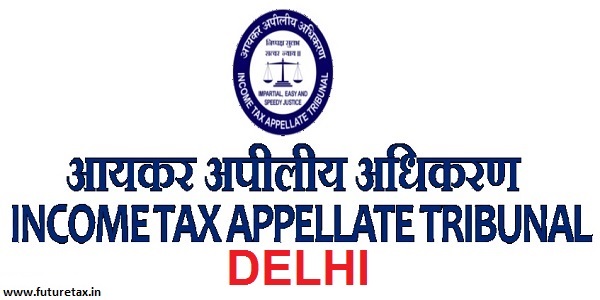
Impact of Majority Rule on Corporate Governance in Tamil
- Tamil Tax upate News
- October 26, 2024
- No Comment
- 106
- 22 minutes read
Abstract: The varied and dynamic effects of majority rule in modern cultures are examined in this research paper. A key component of democratic government, majority rule has seen substantial changes in the context of the contemporary political, social, and technical environments. The research explores the potential and problems associated with majority rule, taking into account how it affects minority rights protection, the dynamics of decision-making processes, and how technology shape’s public opinion. The analysis of majority rule’s current effects includes how it affects the creation of policies, the legislative process, and the general operation of democratic institutions. The research acknowledges the possible hazards of marginalisation and the tyranny of the majority while critically analysing the ways in which majority rule interacts with concerns of representation, inclusion, and equality. Thus, by exploring the intricate relationship among democratic principles, changing social mores, and technology breakthroughs, the study adds important new information to the continuing conversation about the benefits and problems of majority rule in the modern world.
1. INTRODUCTION
The widespread notion in society that majority opinions dominate minority opinions. It refers to the widespread belief that the majority view is always superior, as demonstrated in democratic values and corporate structures such as general meetings and boards of directors. An ideal misunderstanding in which the majority position is frequently depicted as unified or fair, leading individuals to underestimate the value of minority perspectives. Majority rule, particularly in decision-making procedures inside companies or democratic systems such as India, can lead to power abuse.
In the context of corporate governance, decisions are frequently affected by the majority of shareholders, who elect directors to represent their interests. This indicates that power dynamics in both democratic countries and corporate contexts can occasionally ignore minority voices and perspectives, thereby leading to inequities and injustices.
The paper examines the historical development of corporation law, which previously relied on majority rule for decision-making. However, the limitations and negative consequences of this method became clear over time. While majority rule provided for more efficient decision-making, it also allowed for potential abuse of power by the majority at the cost of the minority. The term “ride roughshod over the interests of the minority” refers to a scenario in which the majority, if unconstrained, might dismiss or undermine the concerns and interests of a company’s minority shareholders or stakeholders. This disparity in decision-making authority led to an acknowledgement of the need for regulatory adjustments.
The courts are also highlighted, indicating that, despite a reluctance to engage in internal business activities, there was an awareness of the necessity for judicial action to safeguard the rights and interests of the minority.
The foundation of the rule of majority in corporate law is founded on two essential legal ideas.
The courts are also highlighted, indicating that, despite a reluctance to engage in internal business activities, there was an awareness of the necessity for judicial action to safeguard the rights and interests of the minority.
The foundation of the rule of majority in corporate law is founded on two essential legal ideas.
Interference in Internal Irregularities: The first principle indicates that the court will typically avoid getting involved with a company’s internal problems or irregularities if the issues can be handled or fixed through the company’s internal processes. In other words, if the corporation has processes in place to address and remedy internal difficulties, the court is likely to allow the company to manage these matters internally without the need for outside assistance. The first principle indicates that the court will typically avoid getting involved with a company’s internal problems or irregularities if the issues can be handled or fixed through the company’s internal processes. In other words, if the corporation has processes in place to address and remedy internal difficulties, the court is likely to allow the company to manage these matters internally without the need for outside assistance.
Wrong Against a Company: The second principle emphasises that when an alleged wrongdoing happens within a firm and the party filing the legal action (plaintiff) claims injury against the company, the plaintiff is often the company itself. This represents the concept that in such circumstances, the legal entity of the corporation is considered the injured party. It suggests that legal proceedings are frequently filed on behalf of the firm to redress any injury or violation done on it.
02. SCOPE OF STUDY
Examining the contemporary implications of majority rule in company law entails a thorough examination of the legal principles and practical outcomes linked to corporate decision-making procedures. With an emphasis on the workings of majority power exercises, and shareholder rights, this area of study explores how company law is changing in modern commercial settings.
03. OBJECTIVE OF STUDY
This paper aims to investigate and evaluate the contemporary consequences of majority rule in the context of company law. The study intends to investigate how majority rule, a core concept impacts and develops modern business practises by focusing on the dynamics and outcomes of decision-making processes inside companies. The study aims to provide a thorough understanding of the implications of majority rule on matters like minority shareholder rights, and the overall balance between promoting shareholder interests and ensuring fairness within the corporate landscape by exploring the legal frameworks, judicial precedents, and evolving corporate norms.
04. RESEARCH QUESTION
How does majority rule in company law strike a balance between the interests of majority shareholders and minority stakeholders in the modern business landscape?
How do modern companies address the challenges of effective decision-making when faced with divergent interests among shareholders?
05. HYPOTHESIS
According to the concept, company law’s majority rule is essential to balancing the interests of majority shareholders and minority stakeholders in today’s corporate environment. The legal frameworks and corporate governance practises that oversee majority rule are said to have developed throughout time to include measures aimed at defending the interests and rights of minority stakeholders. The study expects a thorough analysis of court rulings, and modern business practises to demonstrate a dynamic interaction between the development of mechanisms to prevent minority stakeholders from being oppressed or marginalised and the empowerment of majority shareholders for effective decision-making.
When it comes to balancing the varied interests of many shareholders, including owners, managers, customers, suppliers, lenders, regulators, and the general public, modern companies encounter a number of difficulties in making effective choices. Corporate governance refers to the set of regulations, procedures, and practises that establish a company’s direction, control, and means of achieving its strategic objectives while achieving stakeholder expectations. There are many ways that modern companies address the challenges of effective decision-making through corporate governance, creating a clear and transparent governance framework that outlines the board of directors’, executive management’s, and shareholders’ duties, responsibilities, and rights, as well as how they communicate and interact with one another.
06. METHEDOLOGY
This research paper employs an approach of both critical and descriptive analysis. The work was done using secondary data, or sources, such as articles, blogs, websites, books, and journals. All these facts have been utilised to comprehend the paper’s context with the help of research questions. Therefore, these facts or resources have aid us understand the topic [THE MODERN IMPLICATIONS OF MAJORITY RULE] in-depth and in a better form.
07. DISCUSSION
PRINCIPLES OF MAJORITY RULE –
7.1 Definition and Concept:
In the context of company law, “majority rule” refers to the idea that choices made by the majority of shareholders within a corporate body will be implemented. This fundamental idea emphasises the democratic aspect of corporate governance, in which the majority’s collective will is used to decide on issues like resolutions, policies, and important actions. It is an essential principle that raises significant concerns with the safeguarding of minority interests while also attempting to support efficient decision-making within the organisation.
Its goal is to maintain the company’s efficiency and smooth operation without being hampered by the disagreement or lawsuit of minority shareholders. However, the majority rule has the potential to be exploited or misused by the majority shareholders or directors, who may act in their own interests or crush the minority shareholders’ interests. As a result, the rule of majority is not absolute, but is subject to several limitations and protections that offer minority shareholders with different remedies and reliefs.
7.2 Shareholder Voting Rights:
The ability to exercise majority rule depends on the existence of shareholder voting rights. Generally speaking, each shareholder has a specific number of votes, which are frequently in line with their ownership stake. The total of these votes decides how resolutions or elections turn out. Comprehending the subtleties of shareholder voting rights, such as distinct share classes or unique voting arrangements, is crucial for grasping the workings of majority rule and its impact on corporate choices. By guaranteeing that decisions are made in accordance with the majority’s preferences, this concept serves to advance the interests of the shareholders who, taken as a whole, own the majority of the firm.
7.3 Decision-Making Procedures:
Resolutions, meetings, and voting procedures are only a few of the tools used in majority rule decision-making processes. Resolutions are suggested courses of action or choices that need to be approved by shareholders. General and special meetings give shareholders a platform to voice their opinions and cast their votes. comprehending how the preferences of the majority are determined and carried out, as well as how these procedures may affect minority stakeholders, requires a thorough grasp of decision-making processes. A closer look at the legal and procedural components of decision-making clarifies the mechanisms established by company law to maintain equity and openness.
7.4 Board of Directors and Majority Rule:
An essential component of corporate governance is the interaction between the board of directors and majority rule. Even while the board is responsible for day-to-day operations and decision-making, it frequently answers to the shareholders, particularly the majority shareholders. The majority rule has an impact on the composition of the board since it allows directors to be appointed or dismissed in accordance with the will of the majority. Understanding the complexities of majority rule within a company’s governance structure requires an understanding of how the board navigates majority preferences, fulfils its fiduciary obligations, and makes sure that a variety of interests are represented.
7.5 Role of Majority Rule in Corporate Decision-Making:
Corporate decision-making processes are greatly impacted by majority rule, which has an impact on operational policies, financial choices, and strategic orientations. The idea is to guarantee that decisions are made in accordance with the interests of the majority of shareholders, so promoting the smooth operation of the business. The influence on corporate governance, however, comes from the possible difficulties in finding a middle ground between protecting the interests of minority stakeholders and enabling the majority to make decisions that are effective. Though, analysing this relationship is crucial in determining if majority rule strengthens or hinders from a company’s overall governance structure.
8. BASIS OF RULE –
8.1 The right of the majority to rule –
In several situations, the court has determined that an action filed by a single shareholder cannot be considered since the majority of shareholders may relinquish their right to suit and the action does not entail their permission. Because the power of the shareholders to drag the company into a court of law as a claimant is concurrent with the powers of the directors of the company. So, a company can only file a lawsuit in one of two ways – if the directors pass a resolution to that effect or if the company expresses its desire to sue by an ordinary resolution in general meeting. Or if the shareholders want to file a lawsuit and the directors do not, the demands of the shareholders by passing an ordinary resolution will prevail, but in either scenario, the right of the majority shareholder will be upheld as the company is a legal entity. A company that has been legally formed is a separate legal entity and, as stated in Section 9 of the Act, has the “power to acquire, hold and dispose of property, both movable and immovable, tangible and intangible, to contract and to sue and be sued, by its name”. The court repeatedly concluded in several decisions that an action is vested in the business as a whole and cannot be undertaken by a single individual member because a corporation is a persona by virtue of the law.
9. EXCEPTION TO THE MAJORITY RULE
The rule of majority supremacy, as established in Foss v. Harbottle, is not absolute, an English judgement in which the court stated that whatever the majority decision, the court will not interfere. In this case, two shareholders called Foss and Turton (minority group) argue in a company’s general meeting that the company’s directors misapplied the company’s property and misled it. However, the majority of shareholders at the general meeting decided not to sue the directors, claiming that they were not liable in any way. Thus, the plaintiff filed a lawsuit in a court of law, claiming that the defendants were defrauding the firm in many ways, including by selling the company its land at a price well in excess of its true value and by fraudulently mortgaging the property. They pleaded that the defendant should compensate the firm for all of its damages.
There are several exceptions which protect minority stockholders. Both the common law and the provisions of the Companies Act of 2013 acknowledge these exceptions.
The cases in which the majority rule does not prevail are commonly known as exceptions to the rule in Foss v. Harbottle and are available to the minority. Individual minority shareholders aren’t left powerless in these situations; rather, they are given the ability to file a lawsuit.
Grounds for Exception:
- Ultra Vires & Illegal activities: One of the Foss rule’s exceptions is for ultra vires activities, or actions that beyond the legal authority or powers that the firm is granted by its articles of association or memorandum. The Foss rule does not apply in situations when an act is ultra vires. An action that exceeds the company’s legal authority cannot be approved by shareholders, not even by a majority vote.
In these situations, each individual member of the firm is entitled to file a separate lawsuit concentrating on the corporation’s breach of its memorandum or a class action lawsuit claiming compensation for the wrong committed against the company by the violators of the ultra vires act.
- Breach of Fiduciary Duty : When individuals, such as company directors, fail to meet their legal and ethical responsibility to act in the best interests of the company and its shareholders, this is referred to as a breach of fiduciary duty. Fiduciary responsibilities include obligations of loyalty, care, and good faith. The company and its shareholders expect directors to operate in their best interests. Controlling directors may utilise their majority votes at a general meeting to prevent the firm from suing them. They may also prohibit a general meeting from approving a resolution authorising the firm to sue them. Directors may be held liable if they misappropriate or misapply the company’s property, which is a violation of the Companies Act. Every shareholder in the company has the right to file a derivative action in the event that a director violates their fiduciary obligation. Shareholders have the right to pursue legal action in order to hold the firm accountable and collect damages.
- Fraud or oppression against minority shareholders : a circumstance in which the majority of a company’s members abuse their influence to oppress or deceive the minority investors. In the Edward v. Halliwell decision, the court established that if the majority’s actions include oppression or fraud, even a single shareholder may dispute or impeach them. Legal challenges to the majority’s actions must be based on an unethical use of their authority. This indicates that there is more abuse of authority than is acceptable, fair, or right. If fraud or oppression cause the minority to suffer financial loss or unfair or discriminatory treatment or an effort to usurp firm resources for personal gain. The purpose of this legislative structure is to shield minority shareholders from mistreatment by the majority within a company.
- Inadequate Notice for Resolution : The notification for a resolution to be offered at a general meeting is insufficiently detailed. In other words, members may not have received complete and accurate information about the resolution prior to the meeting. If a member did not attend the meeting because of insufficient notice or voted against the resolution, they have the right to sue. Instead of each impacted member filing a separate case, a “representative action” is filed. This implies that one member, on behalf of all similarly affected members, can file a legal challenge to the resolution. The court action seeks a restraining order to prohibit the company from carrying out the resolution that was approved with insufficient notice. In other words, the court may be petitioned to intervene and prevent the resolution’s execution. A “plethora of judgements” suggests that this legal concept has been established by a large number of court decisions or precedents. Courts have frequently emphasised the need of giving members sufficient time before introducing resolutions at general meetings.
- Qualified majority : Higher support is required when a resolution requires a qualified majority to be approved, as per the company’s governing documents or relevant legislation. This can be a two-thirds majority or a particular proportion of the total votes cast. The general rule of a simple majority (more than half of the votes) cannot be used to override these particular conditions if a qualified majority is expressly required by law or the company’s articles. The goal is to avoid a scenario in which a resolution needing more support might be approved irregularly with just a simple majority of votes; in the absence of this concept, the requirements for a qualified majority would become meaningless.
EFFECT OF MAJORITY RULES IN MODERN ERA
Majority rule in modern company law respects the power and autonomy of the majority shareholders, who act as the firm’s voice and best interests. This allows the business to operate effectively and democratically. The majority rule does, however, come with some risks and difficulties.
The potential for directors or majority shareholders to abuse their positions of authority, acting against the interests of minority shareholders or acting in their own self-interest.
The need to adjust to the shifting demands and conditions of the corporate world, such as globalisation, digitalization, innovation, and sustainability. The challenge of striking a balance between the conflicting interests of various stakeholders, including owners, managers, customers, suppliers, lenders, regulators, and society.
In the ICICI v. Parasrampuria Synthetic Ltd. SCL13 case, the Hon’ble Court ruled that conditions in India differ from those in other nations. In India, companies are mostly funded by a state-sponsored framework that obtains capital from financial institutions rather than by the various contributions of small and medium-sized investors. If the Foss case rule is implemented as it is in India, it might result in giving preference to the majority of shareholders who own a larger percentage of the shares over financial institutions who may own a smaller percentage of the shares but still make up the majority financially. Because these financial institutions actually secure and bring in the capital necessary for the business to operate, it could be unfair and wrong to silence these institutional investors in India by a mechanical application of the Foss rule.
Minority shareholders sued the firm in Parshuram v. Tata Industrial Bank Ltd. over a general meeting that took place on May 1, 1923. The minority asked for an injunction to prevent the company’s chosen auditors from auditing its financial statements at that meeting. They prayed for a new meeting, claiming that the choices made during the previous one were void because of improper behaviour. Justice Pratt, however, rejected the lawsuit, ruling that the “irregularities” were a matter for the company’s internal affairs. The operations of such businesses would be hampered if a court intervened in every situation in which a majority of the corporation has the authority to make decisions.
Justices Mookerjee and Rankin maintained the court’s policy of not interfering in a company’s internal affairs in Ghandy v. Pugh. They declared that the minority would not be able to sue the majority of shareholders for conduct that the majority of them had accepted and confirmed. Justice Rangnekar dismissed a minority shareholder’s plea in Bhajekar v. Shinkar for the identical grounds. In Kirpa Ram v. Shriyans Prasad, Justice Kapur reaffirmed this. He declined to pursue the lawsuit, citing a lack of justification for dealing with the affairs of a company.
10. CONCLUSION: –
In conclusion, the contemporary implications of majority rule in company law demonstrate a dynamic interaction between the necessity of safeguarding the rights and interests of minority stakeholders and the effectiveness of corporate decision-making. A deliberate attempt to modify the legal system to address modern business issues is demonstrated by legislative modifications, which emphasise improving accountability, transparency, and equity. Case law precedents give important insights into how these legal concepts are really applied in practise by providing instances of how courts have actually interpreted and navigated the complexity of majority rule.
It is clear from navigating the contemporary consequences of majority rule that the legal system is a flexible and dynamic structure that changes to satisfy the needs of a constantly shifting commercial environment. Research on this subject advances our understanding of corporate governance and feeds into the continuing debates over the moral implications of majority rule and how it affects society’s expectations of firms in general. A corporate governance environment that is both efficient and morally upright can only be shaped by continuing study and analysis as companies continue to manage the difficult balance between minority protection and majority empowerment.
11. REFERENCES: –
1. https://www.legalserviceindia.com/legal/article-8871-majority-rule-in-company-law.html
2. https://www.indiafilings.com/learn/company-law-majority-rule-and-minority-rights/
3. https://blog.ipleaders.in/protection-of-minority-and-majority-shareholders-through-shareholder-agreements-under-the-companies-act-2013/
4. Majority rules and Minority rights – CS Executive Company law. (2020, December 4). Artha Institute of Management. https://www.arthacs.in/majority-rules-and-minority-rights-cs-executive-company-law
5. Aditi Sharma. (2020, May 18). Foss v. Harbottle: Jurisprudence and Exceptions. LawBhoomi.https://lawbhoomi.com/foss-v-harbottle/#Legal_Principle_The_Rule_of_Majority




